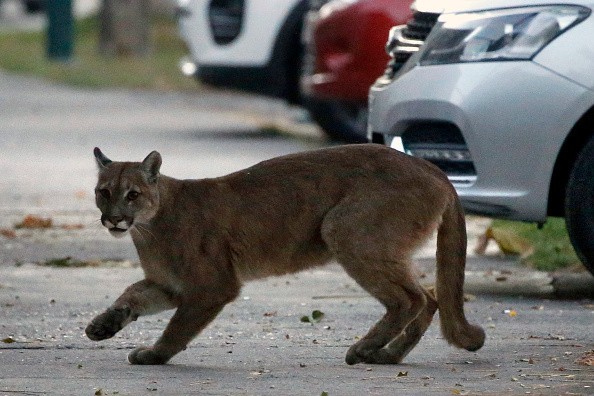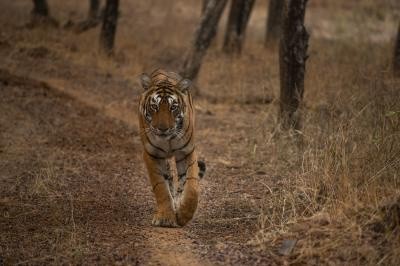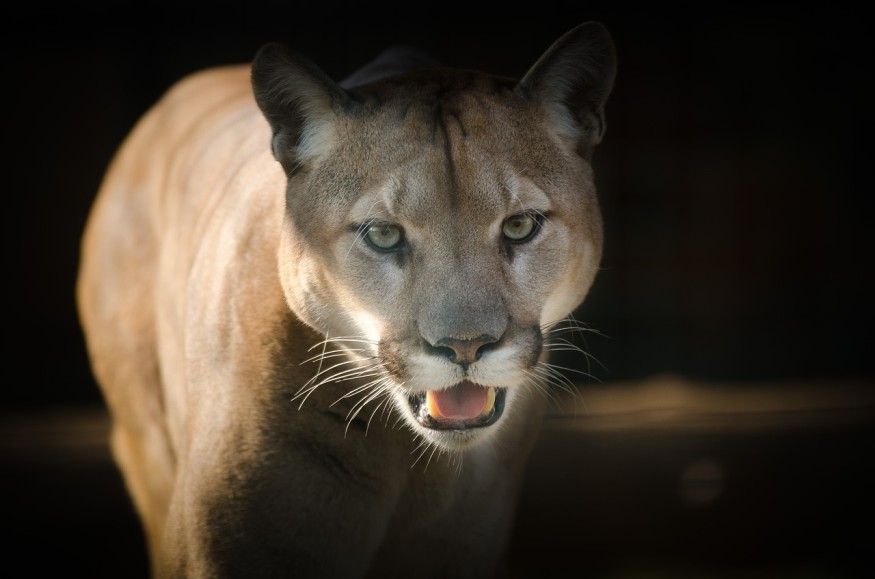As the epicenters of movies, fashion, and traffic congestion, Los Angeles and Mumbai, India, share many superlatives. Another parallel lurks in the shadows, most frequently spotted at night, wandering softly on four paws.

According to The Guardian, these are the world's only megacities with populations of 10 million or more where huge felines - mountain lions in one and leopards in the other - flourish by reproducing, hunting, and defending territory within urban bounds.
Intensive Research

Long-term research in both cities has looked at how large cats move through their urban jungles, and how humans may coexist with them - lessons that may be applied to additional areas in the future decades.
"There will be more cities like this in the future as urban areas encroach on natural ecosystems," said Audra Huffmeyer, a biologist at the University of California, Los Angeles, who studies mountain lions.
"We must learn to coexist with these enormous carnivores if we want to maintain them on the earth."
Looking Back
Twenty years ago, scientists in Los Angeles fitted a monitoring collar to P1, a giant male mountain lion that protected a broad stretch of the Santa Monica Mountains, a coastal range inside and next to the city.
"P1 was probably 150 pounds, as large as they get in southern California," said Seth Riley via iNaturalist, a National Park Service biologist who helped in the attempt. "These dominating males reproduce - they will not accept other adult males in their region."
For seven years, the scientists used GPS tracking and video traps to watch the rise and fall of P1's dynasty through many partners and kitten litters.
"The last time we learned about P1 was in 2009," Riley explained.
"There has to have been a brawl. We discovered his collar and blood on a rock. And he was never seen again. He was of a reasonable age."
Riley has assisted in the collaring of approximately 100 mountain lions in Los Angeles, contributing to a vast database of lion behavior that has contributed to understanding how much territory the cats require, what they eat (mostly deer), and how frequently they cross paths with people, and what may endanger their future.
Inbreeding proved to be the greatest menace to medieval European royalty.
Living in limited regions split by roads has forced some males to mate with daughters and grandchildren who could not disperse naturally further afield.
This has resulted in hereditary disorders, including infertility and kinked tails.
Leopards are crammed into one of the world's most densely populated cities, Mumbai, where roughly 50 have adapted to an area designed for 20.
Nonetheless, the nocturnal cats remain mainly hidden.
"You don't know anything about these creatures since they are so secretive. You can't simply watch them," said Vidya Athreya, director of the Wildlife Conservation Society in India, and a study team member that recently fitted five leopards with tracking collars.
The leopards' primary range is concentrated in Sanjay Gandhi National Park, a protected region surrounded on three sides by an urbanized environment, containing a neighborhood of 100,000 people and about a dozen leopards.
To find out, they apprehended a large guy known as Maharaja.
They discovered that it traveled largely at night and covered more than 60km (37 miles) in approximately a week, from a park in Mumbai to another nearby.
The leopard crossed a major state highway three times, utilizing the same area to pass. It also went across a railway track.
The road chosen by Maharaja is close to a newly constructed highway and freight corridor.
According to the researchers, knowing the highway crossing behaviors of large cats might help authorities make educated judgments on where to install animal underpasses to decrease accidents.
Studying Mountain Lions

A long-term mountain lion study demonstrating the effects of fragmented habitat fueled a successful campaign in Los Angeles to create a wildlife crossing bridge over US Highway 101, one of the city's busiest highways.
Construction began on April 22.
The bridge will be covered in native plants and contain unique sound barriers to minimize light and noise problems for nocturnal creatures when it is completed in three years.
It will link the Santa Monica Mountains and Simi Hills, expanding the dating pool for local mountain lions.
Learning to coexist with cats involves not just infrastructural considerations but also human choices and education.
When Athreya initially began pushing for leopard cohabitation in Mumbai, she was faced with skepticism and criticism from other scientists and officials.
They believed it would be difficult for huge cats to coexist with humans without major friction, if not outright conflict.
"The dominating narrative was conflict," she explained. However, she contributed to the discourse shifting to "negotiations, improving the situation for both animals and people."
That isn't to argue that living beside a large predator is without danger.
Purvi Lote spotted her first leopard on the veranda of a relative's house in Mumbai when she was five years old. She went back inside to her mother, terrified. But the nine-year-old claimed she is no longer terrified of huge cats.
Leopards in Mumbai have adapted to mostly target wild dogs that frequent rubbish dumps outside the jungle, and they have primarily attacked people when trapped or assaulted.
However, according to Jagannath Kamble, an administrator of Mumbai's protected forest, 20 people died in leopard attacks in 2010.
The fact that the underfunded forest department couldn't keep responding to individual assaults by catching and sending leopards to forests since they returned was the tipping point.
Instead, it opted to concentrate on convincing people to cohabit with predators.
In 2011, officials enlisted the help of volunteers, non-governmental organizations, and the media to launch a public education campaign.
Since then, the number of fatalities has significantly decreased, and no one has been killed in an incident since 2017.
Muttu Veli's four-year-old daughter Darshini was the final known casualty.
Darshini was playing outside their home in a slum on the outskirts of the forest, according to Veli, an office worker who moved to Mumbai in 1996, when she didn't return home. Her battered body was eventually found.
There have been no human deaths in Los Angeles related to mountain lions, but one non-fatal attack on a toddler happened in 2021.
Both cities have realized that capturing, killing, or relocating the cats is not the solution.
Huge Cats
"Relocation and slaughter exacerbate conflict," said Beth Pratt, National Wildlife Federation's California regional director. "A stable population is preferable to one in which hierarchies and territories are disrupted."
She believes that avoiding is the best method.
"These huge cats are timid and avoid human contact as much as possible. They're the animal kingdom's most extreme introverts."
For more updates about the latest animal news, don't forget to follow Nature World News
© 2025 NatureWorldNews.com All rights reserved. Do not reproduce without permission.





